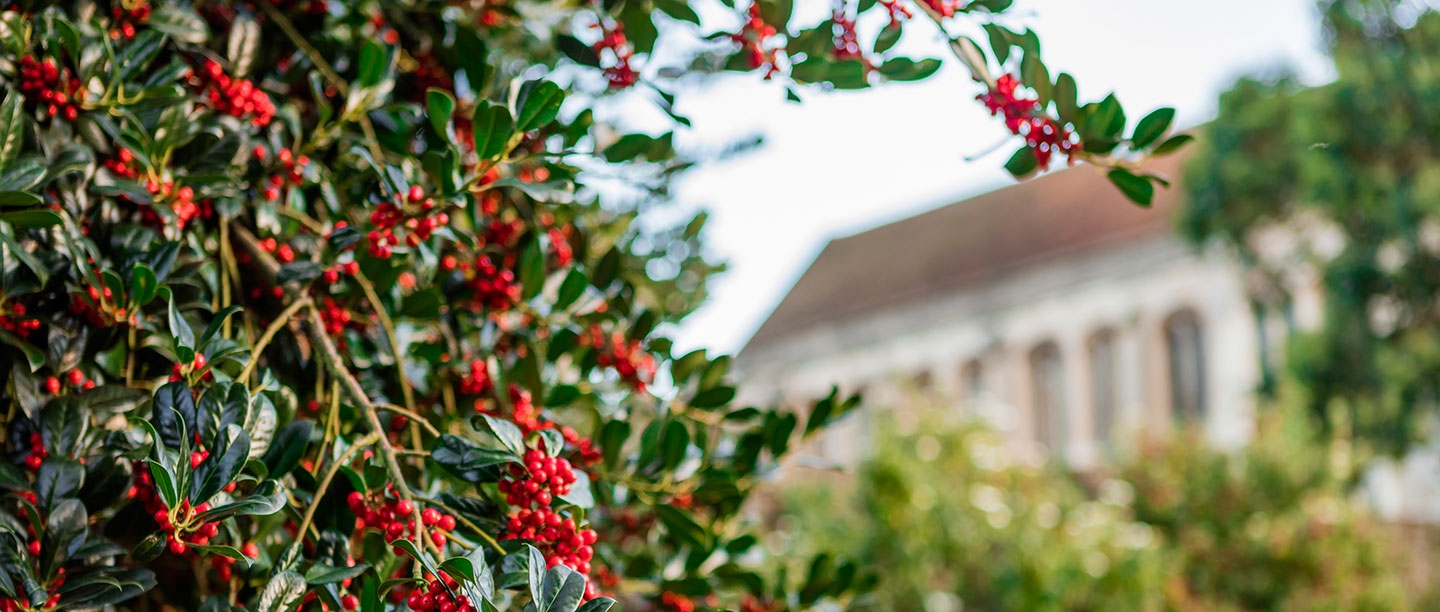Evergreens
Throughout history decorations in the festive season have strongly centred on the use of evergreens. By the late Middle Ages almost all surviving church records include entries for the purchase of holly and ivy in the winter. For Christians evergreens symbolised eternal life and the promise of the return of life in the spring. We know that private homes would also have been dressed in greenery at this time of year. The 16th-century London historian John Stow found an account from 1444, which explained that in London:
every man’s house and also his parish church was decked with holme, ivie, bayes, and whatever the season of the year afforded to be green.
The carol ‘Deck the Halls with Boughs of Holly’ originated in Wales in the 16th century, showing the continued use of holly within Christmas decorations. Other carols of this period also mention ivy and holly as decoration.
In the Victorian period holly and fir garlands were strewn on the mantelpiece. Charles Darwin, writing from his home at Down House in 1877, believed that a scarcity of bees in the spring had resulted in fewer berries on holly that winter. He wrote:
we cannot decorate our Christmas hearths with the scarlet berries of the Holly, because bees were rare during the spring.
Wreaths
In ancient Rome wreaths were used as rewards for military success and excellence. Wreaths made of laurel or olive branches were also used to crown winners of the Olympic Games. Kalends, the New Year festival celebrated by the Romans, included the exchange of wreaths, garlands and other small tokens.
It is believed that Advent wreaths may have been first used by Lutherans in Germany in the 16th century. The first record of this custom, however, is from 1833, when a Lutheran clergyman lit a candle in a wreath every Sunday and told the nativity story. This custom spread to homes and churches and continues today.
During the 19th century wreaths were made to hang on the front door. These wreaths were also known as ‘welcome rings’ and usually consisted of holly, ivy, pine cones and ribbons.
Kissing Boughs
Kissing boughs are a Christmas decoration consisting of two or four crossed hoops forming a spherical shape. They were traditionally decorated with whatever greenery was available. Boughs can measure up to a metre and a half across and are often hung on walls or over doorways as a gesture of goodwill – to welcome guests into the home. It is not certain when kissing boughs were first introduced in England although they are often considered to have been a popular Christmas decoration in the Tudor period.
In the Georgian period kissing boughs were more elaborate, including greenery decorated with apples and oranges, and described as containing ‘bits of coloured ribbons and paper roses’ and other ‘various brightly coloured ornaments’.
Tradition says that gentlemen could pluck a berry from the bough and kiss a lady on the cheek. When there were no more berries, no more kisses could be given. This may be where the tradition of kissing under the mistletoe comes from.
Mistletoe
Pliny the Elder (AD 23/24–79), the Roman author, described how Druids in Gaul ceremonially harvested mistletoe when they found it growing on oak trees, which they revered. In the 19th century antiquarians interpreted this to mean that these ceremonies had also taken place in Britain and at Christmas time, although Pliny made no mention either of Britain or the season.
The poet Robert Herrick (1591–1674) is the first known source to associate mistletoe with Christmas in his poem Ceremonie upon Candlemas Eve (the day that Christmas greenery was removed) with the lines:
Down with the Rosemary, and so, Down with the Baies, & mistletoe.
What we don’t know is whether the association between Christmas and mistletoe was a 17th-century invention, or if earlier references were just not recorded.
In England, the tradition of kissing under the mistletoe is thought to have been first recorded in the comic-opera Two to One, written in 1784:
When at Christmas in the hall
The men and maids are hopping...
Cry, ‘What good luck has sent ye?’
And kiss beneath the mistletoe.
Christmas Trees
Prince Albert, Queen Victoria’s consort, is usually credited with having introduced the Christmas tree into England in 1840. However it was actually ‘good Queen Charlotte’, the German wife of George III, who set up the first known tree at Queen’s Lodge, Windsor, in December 1800.
Christmas trees became very popular with the upper classes, especially for children’s gatherings. Any handy evergreen tree might be uprooted for the purpose and they were usually candle-lit, decorated with trinkets and surrounded by piles of presents.
In December 1840, Prince Albert imported several spruce firs from his native Coburg, in Germany, to serve as Christmas trees. But it was not until a few years later, when periodicals such as the Illustrated London News, Cassell’s Magazine and The Graphic began to depict and describe the royal Christmas trees every year, that the custom of setting up such trees in homes really caught on amongst the general public in England.
By 1860 Christmas trees were very popular with the middle classes. They would have had a Christmas tree in their parlour or hall, covered with candles, sweets, fruit, homemade decorations and small gifts.
Real Christmas trees were still the norm in the early 20th century, but the first bristle-style artificial tree was made by Addis Housewares Company in 1930.
Since 1947, every year Norway has given a large Christmas tree to Great Britain which is displayed in Trafalgar Square, London. During the Second World War, the Norwegian king and government fled to London when their country was occupied. The tree, therefore, is given as a token of gratitude to the people of London for their assistance. This annual tradition shows the great symbolic importance of Christmas trees in Britain today.
Explore more
-
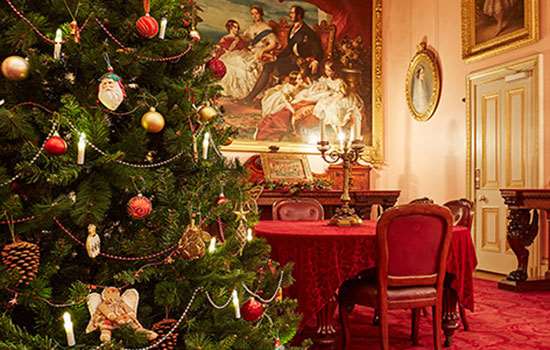
Christmas
Celebrate the festive season with family and friends at our historic places. Find an event near you and learn about the history of some of your favourite Christmas traditions.
-
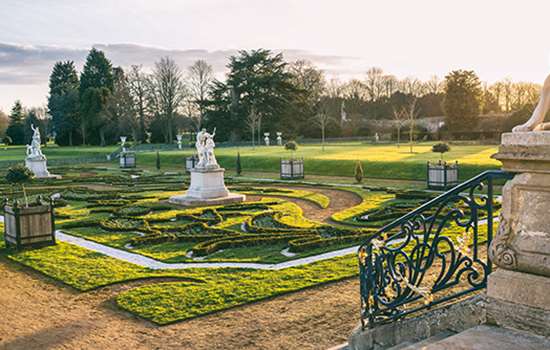
Visit our Gardens
Find beautiful gardens to visit and learn more about the history of gardens through the ages.
-
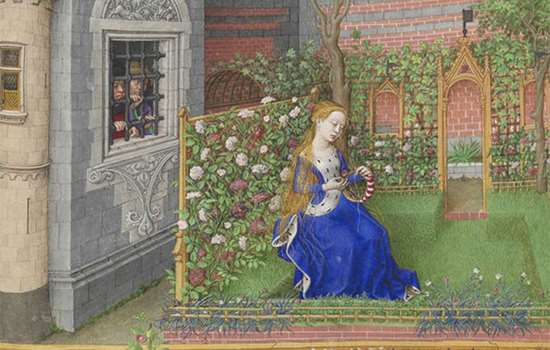
Gardens through time
Explore how garden and landscape design has evolved in England, from the Romans to the 20th century.
-
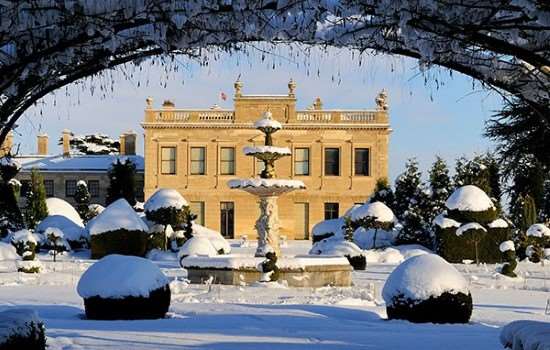
Things to do this Winter
Enjoy frosty garden walks or learn something new from the comfort of your own home. We've got all the tips you need to enjoy the colder months ahead.

